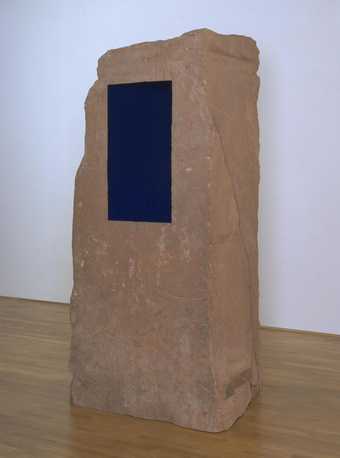
Sir Anish Kapoor CBE RA
Adam (1988–9)
Tate
For many decades, artists have been pushing back the physical and conceptual limits of art, questioning its conventions through an exploration of its relationship to the real world. One of the most distinctive developments over the last twenty years has been the way in which artists have sought to include as part of the work, the actual space in which it is installed. Contemporary 'Installation' art challenges the concept of the museum as a neutral backdrop for the objects it contains by incorporating the gallery space and actively engaging the viewer - both physically and psychologically.
The title of this exhibition is taken from a video work by the American artist Gary Hill, in which he explores the relationship between cinematic and real space. As well as films and videos, which investigate space through the immaterial play of light and sound, the exhibition includes works in which objects have a strong material presence. Many take the form of carefully staged environments, demonstrating the radical switch that artists have made from presenting a window onto the world, to presenting a world in itself. As we move from light to dark, from silence to noise, from a narrow enclosure to a seemingly endless room without walls, we become participants in the unfolding dramas, rather than passive observers.
The exhibition brings together works which address the 'Hard Place' - the tangible, evocative materials and forms that make up our world. Many of these works explore the broad theme of time, layering history and memory, or focusing on the transitory, fragile nature of existence and the duality of mind and body. Rachel Whiteread's Ghost, the cast of the inside of a small room, is a poignant memorial to the spaces we inhabit throughout our lives, while in Miroslaw Balka's Dawn deposits of soap, salt and ash become poetic metaphors for our daily rituals as well as wider issues of human identity and mortality.
A second theme of the exhibition is the notion of 'Cinema', encapsulating not only the moving image but also the way in which the world is mediated through language and imagery, including the narrative structures of film, literature, television and theatre. Not only is our experience governed by these codes, but it is filtered through ever more complex technological systems of reproduction and distribution. The exhibition includes Janet Cardiff and George Büres-Miller's miniature cinema, which spins a web of fictional narratives, Stan Douglas's Win, Place or Show, which disrupts conventions of television drama to explore ideas of time, chance and coincidence, and Matthew Barney's OTTOshaft, which blends images from body-building, American football and human biological processes in a surreal fantasy.
